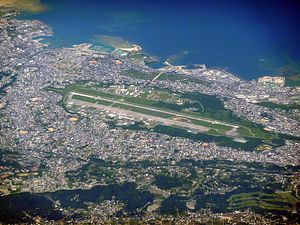Okinawa Governor Takeshi Onaga’s death on August 8 has pushed forward the gubernatorial election in the prefecture. Originally scheduled for November, the polls will now be held on September 30. Campaigning for the post will begin on September 13.
Onaga began his four-year term in 2014, and passed away just shy of completing it this December. He has been public about his health issues since April, and yet kept working for the Okinawan people. He passed away of pancreatic cancer at 67.
The key issue in the upcoming gubernatorial election will be the relocation of the U.S. Marine Corps Air Station Futenma. While the side supporting relocation has consolidated behind a single candidate, the side opposing relocation is still waiting for their preferred candidate to agree to run. To be clear, neither side supporting or opposing relocation wants the MCAS Futenma to stay in Ginowan, where it is surrounded by apartments, schools, and businesses. Those “supporting” the relocation support its relocation to the Henoko district in Nago, while those “opposing” the relocation want it relocated outside of the Okinawa prefecture altogether, so that the burden of hosting U.S. forces is shared more equitably across Japanese prefectures. There is also added tension between Japan (i.e., the central government and other prefectures) and Okinawa because of Okinawa’s history as the independent Ryukyu kingdom.
Onaga’s legacy is the creation of a conservative-left alliance, named All Okinawa. This group has approached the two possible candidates Onaga had wished to succeed him. Morimasa Goya has already declined to run, saying he wants to focus on economic efforts on the island. Denny Tamaki had originally also declined, but is currently giving the idea “serious” consideration. If Tamaki decides to run, All Okinawa will unify and rally behind him.
On the other side, Atsushi Sakima, declared his intention to run on August 14. The Liberal Democratic Party’s Okinawa chapter backs the former mayor of Ginowan, and he will have conservative support. He is also likely to be supported by Okinawans tired of the fighting, and ready to move to a stance of cooperation over confrontation with the central government.
On the ground, Henoko-related developments have crawled to a stop.
Tactically, Onaga dedicated his term as governor to fighting the relocation by focusing on blocking reclamation work off of Henoko. In his latest move, on July 27, Onaga had begun procedures to cancel the approval for reclamation work granted by his predecessor. Vice Governor Moritake Tomikawa, who is acting governor until the election, said that the prefecture will proceed with the process to withdraw landfill approval. Though the approval has not formally been retracted yet, it is only a matter of time, as there appears to be no clear logic as to when the “most opportune” moment for retraction will be electorally speaking.
The central government, which had been planning on beginning construction work on August 18, has postponed it, fearing the impact on the gubernatorial election if they were to proceed. And the central government is right to be concerned over public opinion: about 70,000 protesters gathered in Naha on August 12, rallying against the relocation after a moment of silence for Onaga.
Even though the relocation issue will likely be the political issue in this race, given the structurally fixed nature of the issue and low likelihood of meaningful change no matter who wins, debates over employment security and economic development should also be prioritized.
Japan observers should also keep an eye on the following two base-related developments.
First is the recent movement on Japan-U.S. Status of Forces Agreement (SOFA) revision. Perhaps spurred on by the sentimentality surrounding Onaga’s death, on August 14, the National Governors’ Association unanimously called for a full revision of SOFA. The proposal had been in the works for almost two years and was adopted in July, but only formally submitted to the foreign and defense ministries and U.S. Embassy a week after Onaga’s passing. The proposal includes: applying Japanese laws, particularly Civil Aeronautics Law and environmental protection laws, to U.S. military facilities; on-site inspections by Japanese government officials of U.S. military bases when accidents or incidents occur; provision of advance information of flight routes and schedules during training by U.S. military forces; and downsizing of U.S. military facilities.
An association of governors representing a subset of the prefectures – 15 of the prefectures that host U.S. military facilities – has been calling for a revision of SOFA, created in 1960, since the 1995 rape of a schoolgirl by a U.S. serviceman in Okinawa. But the involvement of all governors is progress for this movement.
The second is a possible prefectural referendum on the relocation. It would be the first plebiscite on the move from Ginowan to Henoko, and the fifth base-related one (fourth one related to U.S. bases) in Japan. Anti-base forces have collected enough signatures to petition the governor to submit a referendum ordinance. The death of Onaga has clearly complicated the strategy around timing, as organizers of the petition drive will have to debate whether to petition the acting governor or wait until after the election. As Robert Eldridge argues, this referendum, which is non-binding but must be “respected” by the governor, will help “bring political and policy clarity to the debate.”

































